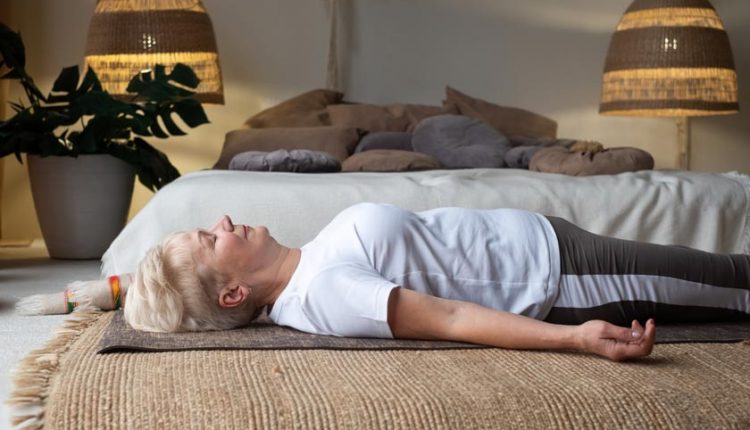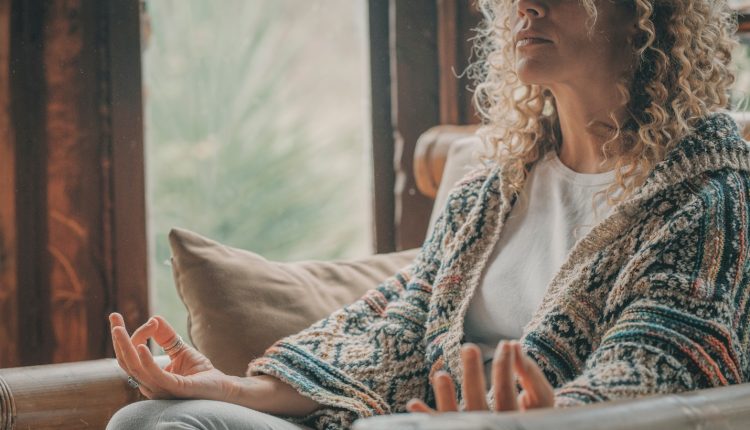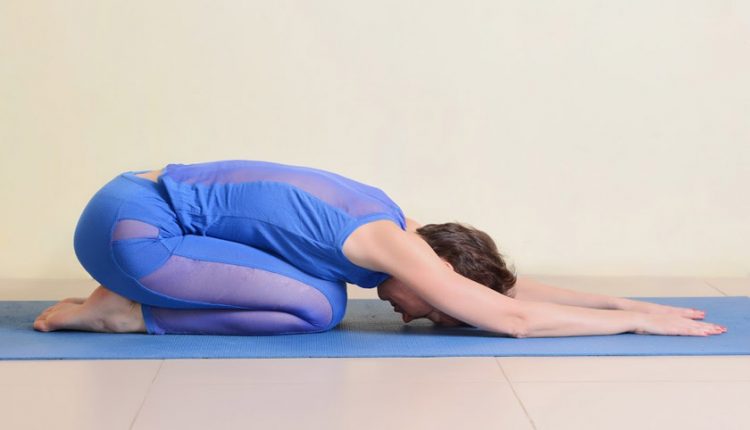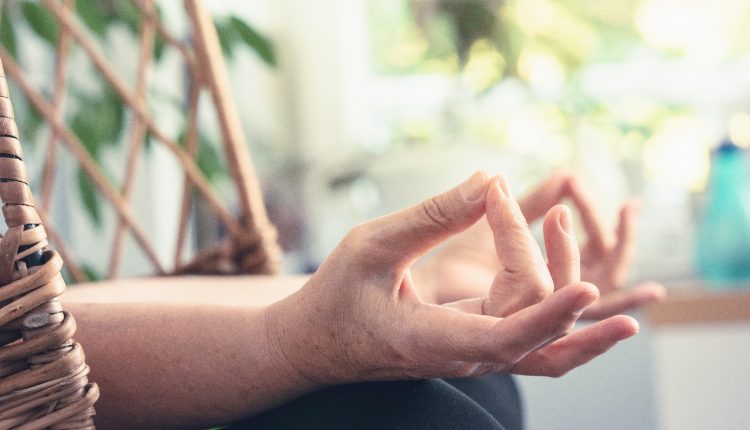
Getting adequate sleep can be a challenge for seniors, especially if they suffer from insomnia. It may not be possible for them to wind down as they used to. As seniors age, they stop moving as much as they once did, which causes them to burn off less energy. Seniors are sometimes frustrated by such issues, and we all know how essential sleep is because the insufficient and inappropriate amount of it can gradually cause physical and mental disorders.
If the person sleeps less than 3.5 hours, they suffer from sleep deprivation.
Contents
How Does Yoga Affect Sleep?
It is very important that seniors avoid sleeping medication as they may be more sensitive to it than younger adults. Taking too much sleeping medication can also be fatal for seniors. Older adults might be better off finding more natural treatments for insomnia. Senior citizens might benefit from yoga classes and nighttime routines that help them sleep better.
Yoga is a soothing, relaxing way to end your day—more than 55% of people who do yoga state that it helps them sleep better. About 85% say yoga reduces their stress levels. Using supportive props such as bolsters, blankets, and blocks allows you to stay in poses longer and breathe normally.
Sleeping better is only one of the many benefits yoga brings to older adults, and it is also one of the best reasons to get started on yoga for seniors now.

Which Yoga Is Best for Sleeping?
It is not necessary for yoga to be an energetic, blood-pumping workout. Some of the most rewarding aspects of a gentle yoga practice are the very subtle changes that the poses can cause in your body.
Restorative yoga is the best type of exercise for seniors who wish to cultivate relaxation and contentment. During class, it’s not uncommon for people to fall asleep. As with restorative yoga, yin yoga emphasizes holding poses for long periods of time.
8 Best Relaxing Yoga Poses for Seniors
Notice: Pay extra attention to your breathing.
For these following poses to be relaxing, you will need to control your breath. The physical act of breathing is just as important in yoga, if not more so. Take deep breaths with the Ujjayi Breath, also known as Ocean Breath or Victorious Breath. Use your nose to breathe deeply. Breathe through your nose while constricting your throat as if you are saying “ha” without opening your mouth. If you exhale like ocean waves, you should sound like the ocean waves. Breathing slowly and steadily helps you to relax in each of these poses.
Here are the eight yoga asanas you should practice to overcome insomnia:
1. Plow Pose (Halasana)
You can fall asleep more accessible if you stay in the plow pose for about one to five minutes. The way to do it is to lay on your back, raise your legs above your head and then place them on a flat surface behind you. You must support yourself with your hands on your back or the floor while you do this. Bringing new vitality into the body is accomplished by turning the blood flow.
2. Cat Stretch (Marjariasana)
It is an exceptional stretch for making the spine supple. It also softly rubs your digestive system and facilitates your recovery of digestion, enabling you to get a good night’s sleep. Moreover, it stimulates blood flow and relaxes your mind.

3. Child Pose (Shishuasana)
The most calming stretch for the back, this pose also assists in calming the nervous system, thus aiding you in sleeping peacefully.
4. Standing Forward Bend (Uttanasana)
You perform this pose by standing with your feet about 6 inches apart and folding your chest down to the ground, reaching for the flat surface, or bending your arms and clasping the two opposite hands together at the elbow. This yoga pose also provides benefits for reducing anxiety levels, in addition to dealing with headaches and insomnia. While performing Uttanasana, you must sway a little from side to side and inhale. When your knees are sore, bend them as much as necessary to reduce the strain on your joints. Within a short period, the hips and legs will begin to relax.
5. Legs Up the Wall Pose (Viparita Karani)
Perform this simple yet effective pose against a wall at the end of the day to provide anxiety relief and evening relaxation. If it is necessary, use a calming eye pillow if you need it. For the best results, try to stay in this pose for as long as 5 minutes. Flipping the legs upwards allows the blood to flow back to the heart. There is a calming effect to this yoga pose.
6. Corpse Pose (Savasana)
It is essential to place the body in sleep mode with a humble corpse pose, focusing the attention on the body and inhalation, letting go of the day’s worries. Keeping your mind on the present and being conscious helps you take your mind off the situation that is leading to distress and anxiety, which will help you sleep peacefully.

7. Reclining Butterfly (Supta Baddha Konasana)
In essence, it is just a variation of the basic butterfly yoga posture that can assist the body in settling down. When lying flat on your back, on either your bed or a mat, you should slowly bring your legs together, spreading your knees out into a diamond pattern.
It is essential to follow this step by putting one hand on your heart and the other on your stomach. Take deep breaths, observing the movement of the air in and out of the body as you do so.
8. Wide-Knee Child’s Pose (Balasana)
Resting in this pose provides a feeling of stability and calm. You should be cautious if you have hip or knee problems.
Bring your big toes together as you kneel on the ground. Your knees need to be at least hip-width apart or as wide as the edges of the mat. Take a deep breath and rest your torso on your thighs.
Relax your hands alongside your torso, and keep your palms facing up so that your arms face the back of the room. You should feel your shoulder blades widen away from each other, thus releasing shoulder tension.
The Bottom Line
Practicing these seven poses at the end of the day will relieve tension and stress. It is likely that the more often you practice these poses, the better your chances of getting a good night’s sleep are.
Don’t forget that sometimes, group activities bring the best results. So it might be a good idea to check the best yoga retreats in Canada if you’re interested in giving this exercise a try.
As someone who struggles with sleep, this article is incredibly helpful in understanding how different styles of yoga can impact sleep quality. I appreciated the author’s clear explanations of the physiological mechanisms behind each style of yoga and how they might promote relaxation and restfulness. While I’ve tried some of these styles before, I had just thought about their specific effects on sleep when reading this article. I’m excited to incorporate some of these practices into my bedtime routine and see how they impact my sleep.
While it’s great to see research exploring the relationship between yoga and sleep, it’s important to remember that everyone’s body and sleep needs differ. What works for one person may not work for another, and other factors beyond yoga may contribute to sleep issues. Additionally, some of the specific poses and sequences suggested in this article may not be accessible or safe for all practitioners. Talking to a healthcare provider before starting any new exercise or relaxation practice is always a good idea, especially if you have any preexisting health conditions or injuries.